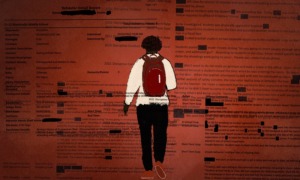More teens now perceive using marijuana once or twice a week to be a lower risk to their health than smoking cigarettes every day, according to a new government survey. As a result, marijuana use among children between the ages of 12 and 17 has stayed stable for the last several years, while cigarette smoking has declined.
Shifting perceptions about the dangers of these substances played a role in how young people used them, according to findings by the U.S. Substance Abuse and Mental Health Services Administration. Children were less likely to smoke cigarettes, use illegal drugs or binge-drink alcohol if they perceive those activities to carry a high amount of risk, and were more likely to use those substances they think carry a low to moderate risk, according to SAMHSA’s 2011 survey of drug usage released Monday.
Last year, 66.2 percent of children between 12 and 17 said smoking a pack or more of cigarettes a day was a great risk, compared to 44.8 percent who saw great risk in using marijuana once or twice a week, the survey found.
About 7.8 percent of young people surveyed admitted to smoking cigarettes in the previous month, continuing a decline in usage that started several years ago. Compare that to 7.9 percent of young people who admitted to using marijuana in the previous month — it’s about the same since 2009 but an increase from 6.7 percent in 2007.
The percentage of young people who admitted to using illicit drugs — marijuana, heroin, cocaine, pain relievers, inhalants and others — in the past month also stayed stable at 10.1 percent last year. It’s also been at that level since 2009, after increasing from 9.3 percent in 2008.
This upward trend worries researchers, who warn that substance use among adolescents can have hugely damaging consequences. The federal office on juvenile justice and delinquency prevention warns that using illegal drugs or binge drinking affects adolescents’ physical and mental health, and can cause depression, developmental delays and social isolation, increasing the chances of the young person dropping out of school.
The SAMHSA survey findings appear to confirm a link between behavior at school and substance use. Young people who had been in fights at school over the past month were more likely to report using illegal drugs, according to the survey report.
Obvious parental disapproval and parental involvement served as deterrents to substance use among youth. “Youths aged 12 to 17 who believed their parents would strongly disapprove of their using substances were less likely to use that substance than were youths who believed their parents would somewhat disapprove or neither approve nor disapprove,” the report said.
Other deterrents included how difficult young people found it to obtain certain substances. The easier it was to get marijuana and alcohol, for example, the higher the likelihood children would use it. Nearly 48 percent of young people between 12 and 17 said that it would be “very easy” or “fairly easy” for them to get marijuana if they wanted it, the report found.
























